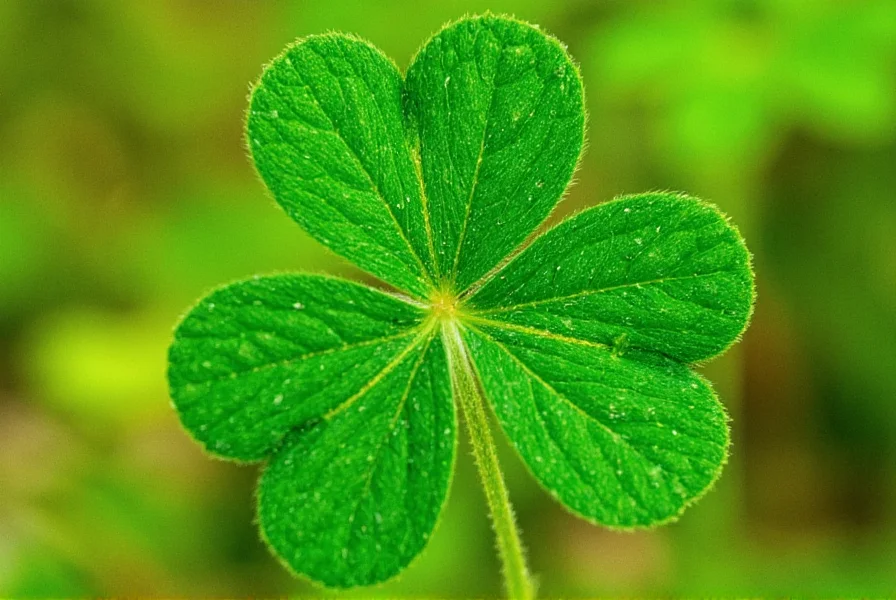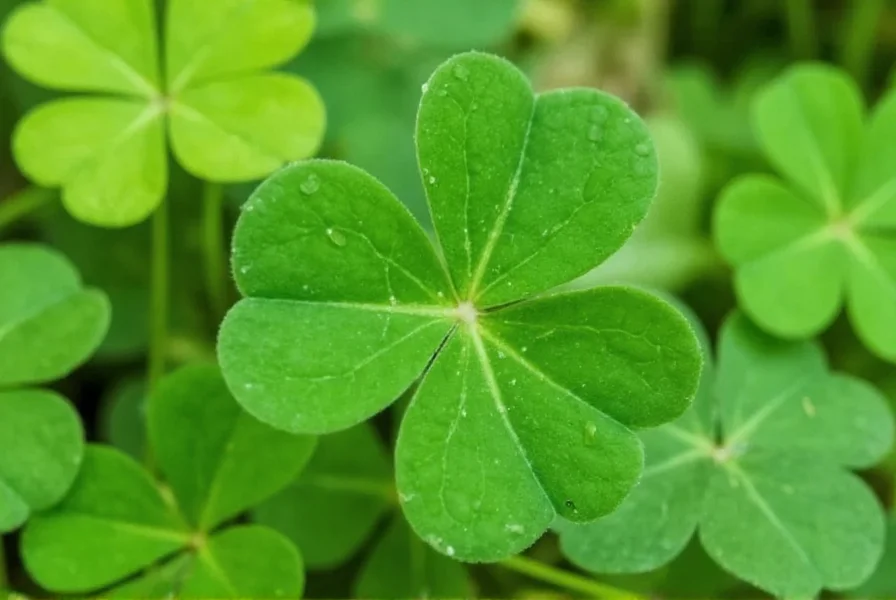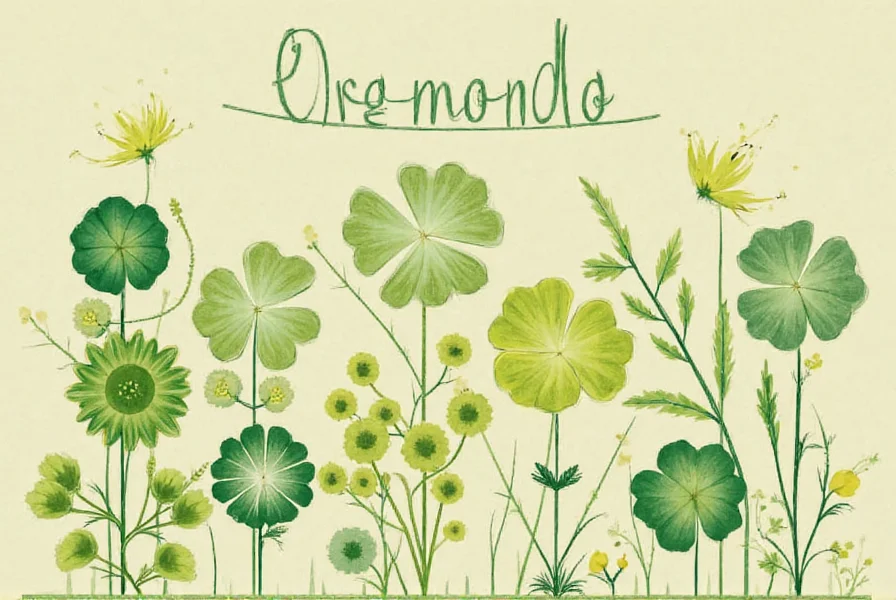When you encounter what's commonly called "common clover" in your yard or local park, you're almost certainly looking at white clover (Trifolium repens). This resilient plant has become so ubiquitous in North American and European landscapes that many people mistake it for a native species, though it was actually introduced from Europe centuries ago. Understanding this versatile plant requires examining its botanical characteristics, ecological role, and relationship with human landscapes.
Botanical Identification of White Clover
White clover stands out with several distinctive features that make identification straightforward for beginners. Each leaf consists of three heart-shaped leaflets (trifoliate) with a characteristic pale crescent or "water mark" pattern. The flower heads are spherical clusters of numerous small florets that range from white to light pink. Mature plants typically grow 4-8 inches tall but can spread horizontally up to 18 inches through creeping stolons that root at nodes.

Distinguishing Common Clover from Similar Species
Many gardeners confuse different clover varieties. Here's how to differentiate the most common types:
| Feature | White Clover (Trifolium repens) | Red Clover (Trifolium pratense) | Microclover (Trifolium repens var.) |
|---|---|---|---|
| Height | 2-8 inches | 12-24 inches | 3-6 inches |
| Leaf Marking | Prominent pale "V" | Less distinct marking | Small, subtle marking |
| Flower Color | White to pale pink | Bright pink to purple | White |
| Growth Habit | Spreading via stolons | Upright | Low-growing, dense |
Ecological Benefits of White Clover
White clover's reputation as a "weed" overlooks its significant ecological contributions. As a legume, it hosts nitrogen-fixing bacteria in root nodules, enriching soil fertility naturally. This makes it particularly valuable in organic gardening systems where synthetic fertilizers aren't used. A single acre of white clover can fix 50-170 pounds of nitrogen annually, reducing the need for additional soil amendments.
For pollinators, white clover provides essential nectar and pollen resources throughout the growing season. Honeybees show particular preference for white clover flowers, which explains why clover honey remains popular among artisanal producers. The plant's extended blooming period from spring through fall offers consistent food sources when other plants aren't flowering.
White Clover in Lawns and Landscapes
The relationship between homeowners and white clover has evolved significantly in recent years. Once considered a lawn weed requiring eradication, many now intentionally incorporate white clover into lawn mixes for several practical reasons:
- Drought tolerance - White clover maintains green color during dry periods when traditional turf grasses go dormant
- Reduced mowing - Grows lower than many grass varieties, requiring less frequent cutting
- Natural fertilization - Nitrogen fixation benefits neighboring plants
- Pest resistance - Fewer insect problems compared to conventional turf grasses
Modern "no-mow" lawn enthusiasts often blend microclover (a smaller-leafed variety of white clover) with fine fescues to create low-maintenance, eco-friendly ground covers that require minimal water and no synthetic fertilizers.
Managing White Clover When Undesired
While beneficial in many contexts, white clover may become problematic in certain situations, particularly in formal lawns or vegetable gardens. Effective management strategies include:
For organic control, maintain healthy turf through proper mowing height (3-4 inches), regular aeration, and appropriate fertilization to encourage dense grass growth that naturally crowds out clover. Hand-pulling works for small infestations but requires removing the entire root system. For larger areas, corn gluten meal applied in early spring can prevent seed germination.
Chemical control options exist but should be considered carefully, as many broadleaf herbicides affect other desirable plants. Selective herbicides containing triclopyr or dicamba can be effective but require precise application timing during active growth periods.

Edibility and Traditional Uses
All parts of white clover are edible, though proper preparation enhances both safety and palatability. The flowers make excellent additions to salads or can be steeped for tea. Some traditional preparations include:
- Flower fritters - Dip blossoms in batter and lightly fry
- Clover tea - Steep fresh or dried flowers in hot water
- Young leaf salad - Use tender new growth in moderation
Historically, various cultures have used white clover medicinally, though scientific evidence supporting these applications remains limited. Always properly identify plants before consumption and consult with a knowledgeable expert when foraging.
Common Misconceptions About White Clover
Several persistent myths surround white clover. Contrary to popular belief, finding a four-leaf clover doesn't require searching through white clover exclusively—four-leaf mutations occur in various clover species. The notion that white clover "ruins" lawns has been largely debunked by modern turf science, which recognizes its soil-enhancing properties.
Another misconception suggests white clover aggressively invades gardens. In reality, it typically establishes in areas with compacted soil or nutrient deficiencies, serving as a natural indicator of soil conditions needing improvement rather than causing problems itself.
FAQ Section
Is white clover the same as common clover?
Yes, when people refer to "common clover" in everyday conversation, they're almost always talking about white clover (Trifolium repens). This species earned the "common" designation due to its widespread presence in lawns, pastures, and disturbed areas across temperate regions worldwide.
Does white clover really fix nitrogen in soil?
Absolutely. White clover forms a symbiotic relationship with Rhizobium bacteria in root nodules that convert atmospheric nitrogen into plant-available forms. This natural fertilization process can provide 50-170 pounds of nitrogen per acre annually, benefiting both the clover itself and surrounding plants without synthetic fertilizers.
Is it beneficial to have white clover in my lawn?
Yes, white clover offers several lawn benefits including drought tolerance, reduced mowing requirements, natural fertilization through nitrogen fixation, and support for pollinators. Many modern lawn care approaches intentionally incorporate microclover (a smaller-leafed variety) into grass mixes for these ecological advantages while maintaining an attractive appearance.
How can I identify white clover versus other clover species?
White clover features trifoliate leaves with a distinctive pale "V" or crescent marking on each leaflet, low-growing habit (2-8 inches tall), white to pale pink spherical flower heads, and spreading growth via stolons that root at nodes. It differs from red clover, which grows taller with pink-purple flowers and upright growth, and alsike clover, which has more elongated flower heads and different leaf markings.
Is white clover edible for humans?
Yes, all parts of white clover are edible. The flowers make excellent additions to salads or can be steeped for tea. Young leaves can be eaten in moderation. Traditional preparations include flower fritters and clover tea. As with any foraged plant, proper identification is essential before consumption, and some individuals may experience digestive sensitivity to large quantities.











 浙公网安备
33010002000092号
浙公网安备
33010002000092号 浙B2-20120091-4
浙B2-20120091-4